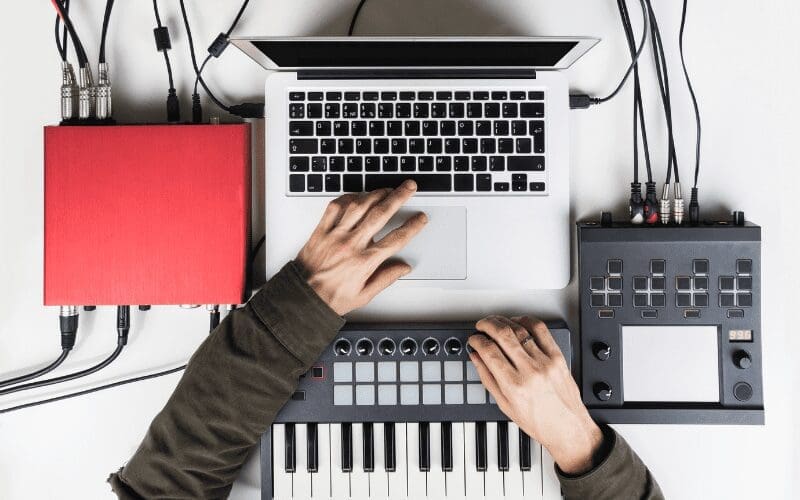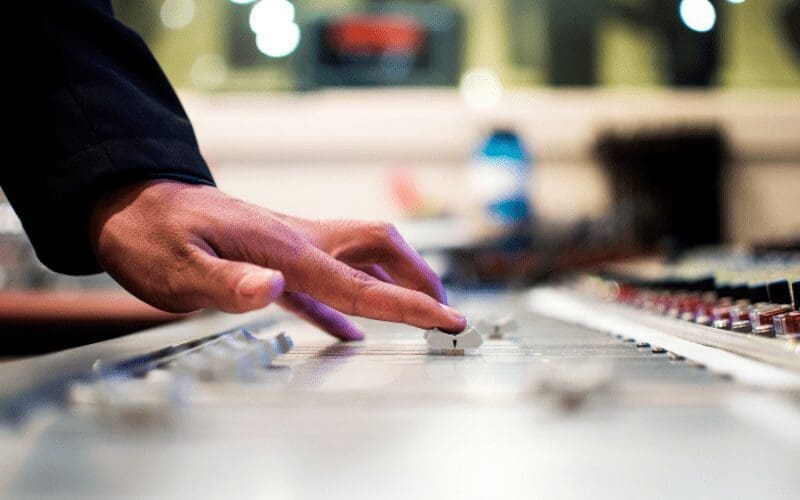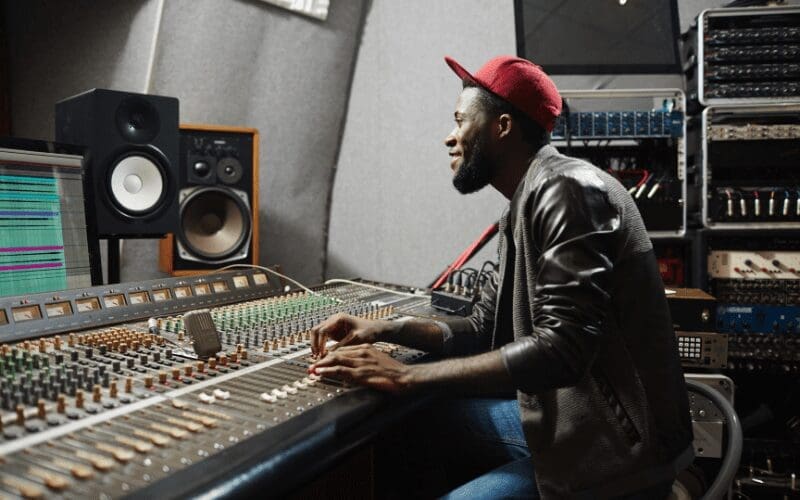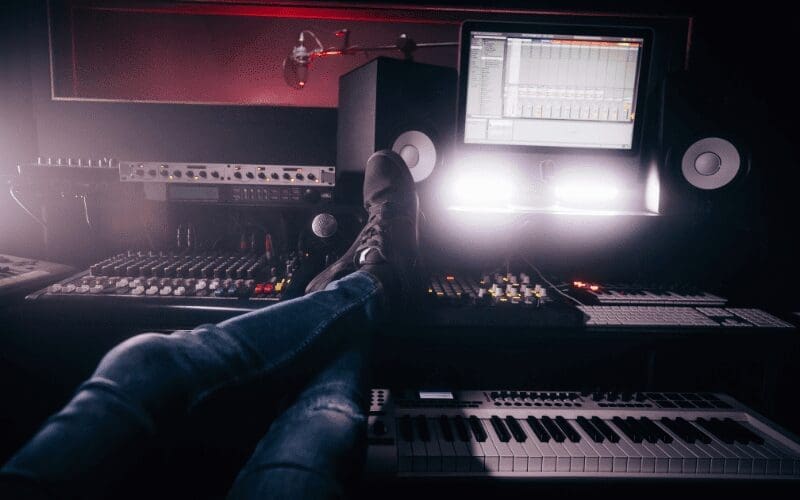If you’ve ever worked with a producer or in a commercial studio setting, you have probably heard the term ‘Reference Track’ as a way of defining some goalposts for the artist and producer to shoot toward during the creative process. But, what is a reference track really?

In this article, we’ll investigate what reference tracks are and how to use reference tracks when mixing and recording.
Stay tuned for everything you need to know!
What Is A Reference Track?

A reference track is simply an audio touch point to get the artist thinking about how they want their record to sound. As well as for a music producer to have a clear idea of what an artist is looking for.
You might be working with a singer-songwriter who plays guitar and sings. There are a number of different directions you can go in as a producer that inform both your mixing and your recording methods – and even your creative suggestions.
Consider the difference between artists like Joni Mitchell, Damien Rice, and Passenger. You’d put all of them under the bracket of an acoustic singer-songwriter. But their records sound very different from one another and knowing where an artist fits into the spectrum is vital to creating a sound everyone is happy with.
Why Should You Use A Reference Track?

The great thing about working with reference tracks is that it leaves a lot less room for interpretation, personal tastes, and sensibilities of the producer clouding what the artist is aiming for.
Using a reference track removes all ambiguity because it gives a producer a feel for the sound an artist is driving for. As well as a concrete reference point to keep active during a recording or mixing session.
Beyond that, once all of the trackings has been done, using a mixing reference is hugely beneficial because it makes the mixing process faster, easier, and ultimately more professional sounding. As well is more translatable when listeners hear your mix in different environments.
A lot of recording engineers refer to the process of mixing without reference tracks as ‘mixing blind’, which is a really good way of thinking about it. The problem with mixing in isolation with just you and your track is that you effectively mix from ear memory. As you mix and spend more time in front of the sound, the lines start to blur.
Having a professional mix that you keep referring back to as you go allows you to keep your mix on the right track. You can continually come back to your reference to make sure that the elements of your mix are at the same levels as a professionally-released track, which in turn, improves your own mixing abilities.
What Should A Reference Track Be Like?

So, you might be wondering what you should look for in a reference track. The answer is perhaps a little more complex than simply picking your favorite song and using that (although that is not something you’d never do).
You want to be choosing references that have specific things that you want to emulate. It could be that you want to emulate the drum sound from Eric Clapton’s ‘Bad Love’. Or, you might be more interested in the total mix and looking to recreate the feeling of Robert Randolph and the Family Band’s records where they always sound like they are playing live to a big audience.
In any case, use a few reference tracks. But a good rule of thumb is to try to keep within the bounds of the track you are mixing. You want to stay generally within the established genre trends (without sacrificing your originality). So using ‘It’s Tricky’ by Run-D.M.C. as a reference track for a band like The Offspring, may cause difficulty because the genre trends are at odds in terms of the conventions of balancing guitars and vocals.
How To Use Reference Tracks When Mixing

Opinions are divided on when references should come into play. However, we think it’s good to get reference tracks before you even start a recording session because the references might well change how you record at the source.
For example, most bands build their recordings from the drums up. So when you’re getting the drum sound you might reference AC/DC. Not only will the drum reference inform the mixing and effects you might use on the kit, but it could also influence how you get the drummer to perform. Taking the AC/DC example, you’d be looking for short decay, tight hi-hats, and not a lot of cymbal work in the performance. Then, when you come to mixing, the drums are front and center and sound very crisp.
Sometimes you might be looking for a specific instrument tone or vocal effect. If your artist gives you John Lennon’s vocal sound on ‘A Day in Life’, you know you can use compression, delay, and EQ to recreate that effect.
Mixing With A Reference Track

When you come to mixing a project, it’s good to use a reference track as often as possible and keep coming back to it.
When you’re mixing, have the following elements in mind:
- Track levels, panning, and effects
- Dynamics
- Frequency
We go into a bit more detail about these below.
Track Levels, Panning & Effects
When you listen to your reference track, make sure you are listening to it on the same speakers/headphones as the ones you are using to mix so you are comparing apples to apples. It’s also good to remember that your reference track will probably have a much higher output volume than your mix because it will have been mastered. So drop your reference in volume until it sits alongside the volumes of your reference.
When you listen to your reference, think about each instrument and where it sits in the mix as well as where it sits in the stereo field. Once you have a similar balance, then think about the effects and what has been added to your reference. Does the snare have a gated reverb on it or is it dry? Does the voice have saturation on it, or is it clean? Your ears are your best friend here – try to use what you hear as your main guide.
Dynamics
Then think about dynamics. What we mean by this, is to listen to the quietest part of your reference track and compare it to the loudest part.
You can use your ears here, but we would also recommend loading your reference track into your DAW and using a tool like Logic’s Multi-Meter to understand the actual difference in dB so you can accurately mirror it in your mixes.
Frequency
Finally, consider the frequencies.
Again, your ears are the most important source of information but it can also be helpful to load your track into your DAW and open up an EQ plugin so you can evaluate where the peaks are (particularly for the bass).

Some might argue that using reference tracks is a bit of a cheat. However, we would argue that using a reference track is essentially ensuring that your work is in line with the very best music producers and mixers in the world.
You’re not looking to replicate every tiny element of their mixes, but instead, use them as a guide so that you can improve the quality of your mixes and deliver exactly what your client is after.
It’s no different from how a guitar player might delve into the techniques and tones of someone like Jimi Hendrix, Joan Armatrading, Eric Clapton, or Angus Young to further develop their sound. Emulating the greats is always a good thing to do.
Using references allows you to deliver high-quality recordings much faster and easier. It also hones your own skills and over time, you will find your own instincts improve. Give it a try on your next mix and see if you notice any improvement! Good luck!
We hope that you enjoyed this article! Be sure to share it across your socials with your fellow musicians and give us a tag @musicgateway! We love interacting with you all.










